Nature is full of surprising hunters that you wouldn’t expect to be so fierce. Some of these creatures are small, others are seemingly harmless, but all are incredibly effective at what they do. Let’s dive into the world of under-the-radar predators that are more formidable than you might think. Buckle up—you might never look at them the same way again.
1. Common House Cat
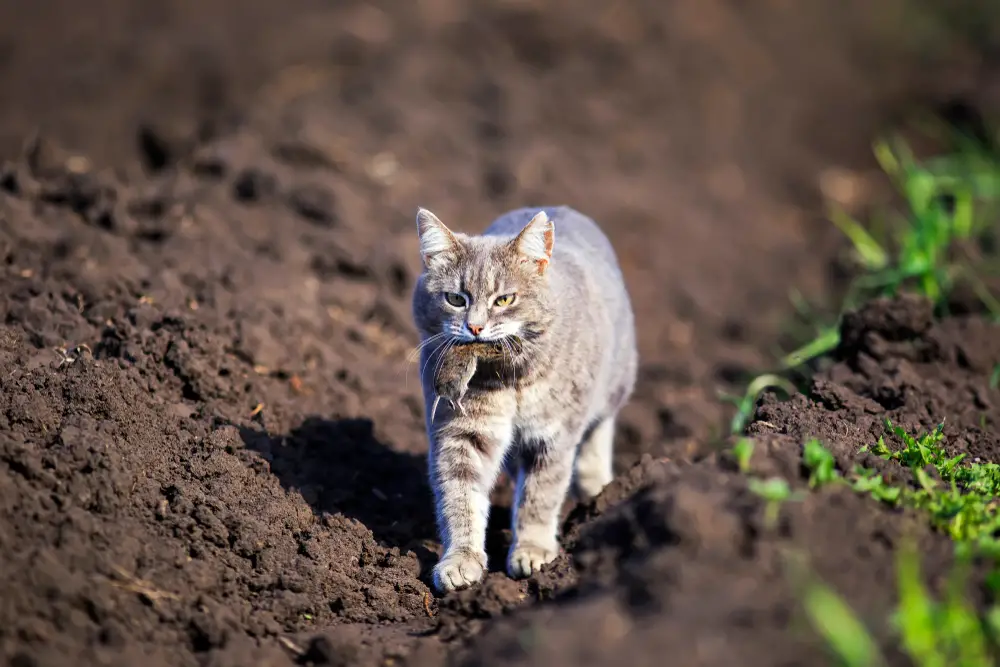
When you look at your fluffy, purring house cat curled up on the couch, it’s hard to imagine them as a ruthless predator. But beneath that cute exterior lies a skilled hunter. Domestic cats are responsible for killing billions of birds and small mammals each year. According to Professor Peter P. Marra, a co-author of a study published in Nature Communications, domestic cats kill an estimated 2.4 billion birds annually in the United States alone. So next time you see your cat eyeing a bird outside the window, remember there’s a reason they look so intent.
Cats rely on their stealth and sharp reflexes to catch their prey. They use their keen senses to find and stalk their target before pouncing with swift precision. This hunting prowess is so deeply ingrained that even well-fed domestic cats can’t help but catch and kill small animals when given the chance. It’s not just about food; it’s also about instinct and the thrill of the hunt. So while your cat may be a beloved pet, they’re also one of nature’s most efficient hunters.
2. Praying Mantis

The praying mantis is a master of disguise and a formidable predator that you wouldn’t expect to be so ruthless. Their elongated bodies and folded front legs make them look harmless, almost like they’re in a constant state of prayer. However, when prey comes within reach, the mantis strikes with lightning speed. Their forelegs are equipped with sharp spikes that grip and hold their victims as they feast alive. This method of hunting is both efficient and brutal, ensuring that the mantis gets a good meal.
Females are notorious for being particularly vicious, sometimes even during mating. They’ve been known to decapitate the males, often while they are still in the act. This cannibalistic behavior might sound brutal, but it serves a purpose. It provides the female with the nutrients she needs to produce eggs. While you may feel bad for the male mantis, it’s a testament to how survival drives the behavior of even the smallest creatures.
3. Dolphin
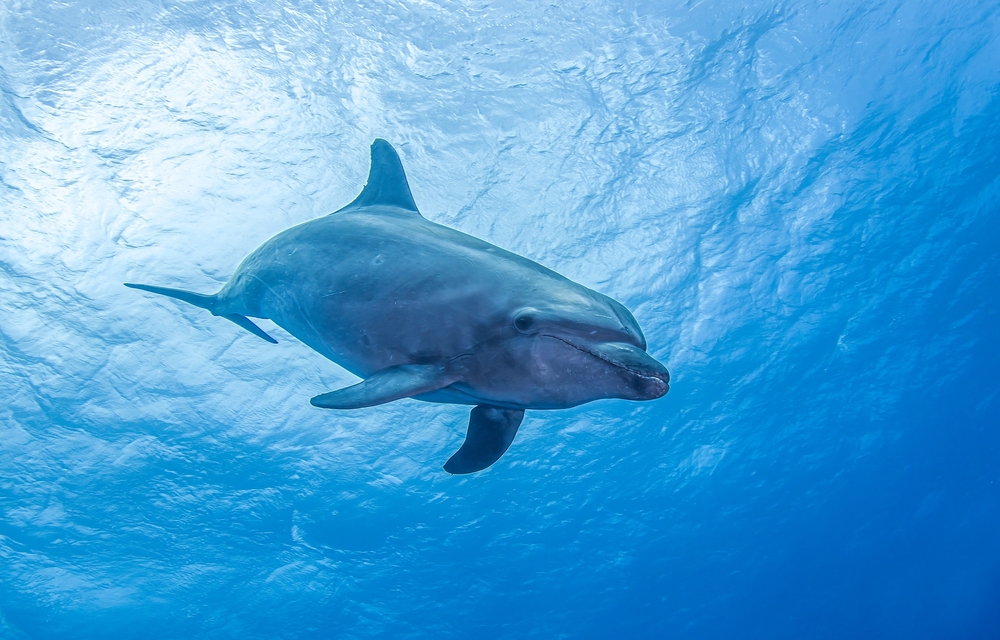
Dolphins are often seen as friendly, intelligent creatures that enjoy frolicking in the ocean, but they have a darker side when it comes to hunting. While they don’t have the teeth of a shark, what they lack in ferocity, they make up for in teamwork and intelligence. Dolphins use a variety of sophisticated techniques to capture prey, including herding fish into tight balls to make them easier to catch. Marine biologist Dr. Janet Mann has noted that dolphins also use tools, like sponges, to protect their snouts while foraging on the seafloor. This level of intelligence and cunning makes them highly effective predators.
Their social structure further enhances their hunting capabilities. Dolphins work together in pods, collaborating to outsmart and corner their prey. This teamwork allows them to tackle larger prey than they could alone. Their ability to strategize and plan their attacks makes them one of the ocean’s most successful predators. So next time you see dolphins playing in the waves, remember that their playful nature hides their serious hunting skills.
4. Bullfrog

When you think of frogs, you might picture a small, harmless creature sitting on a lily pad. But bullfrogs are a different story altogether. These amphibians are aggressive hunters with voracious appetites. They will eat anything they can fit into their wide mouths, from insects to small mammals and even other frogs. Their ambush-style hunting makes them particularly effective at catching unsuspecting prey.
Bullfrogs use their powerful legs to leap great distances, surprising their prey with a quick snatch of their sticky tongues. Their mouths are built to handle a variety of prey, with strong jaws that ensure nothing escapes once caught. While their hunting tactics might seem excessive, they’re necessary for survival in the wild. Their ability to eat a wide range of foods gives them an advantage over more selective predators. So the next time you hear a bullfrog croaking, remember that they’re not just making noise—they’re on the hunt.
5. Starfish
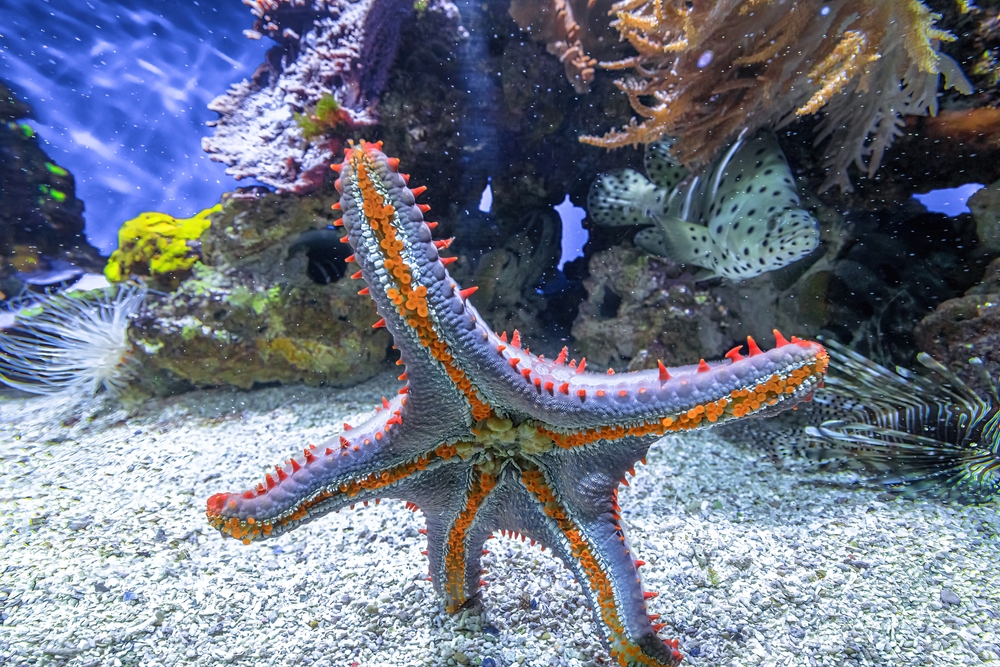
Starfish, or sea stars, might look like passive ocean dwellers, but they’re far from it. These seemingly benign creatures are actually effective predators, particularly when it comes to mussels and clams. Using their tube feet and hydraulic system, starfish pry open the shells of their prey. Once they’ve created a small gap, they eject their stomachs out through their mouths to digest the prey externally. Marine biologist Dr. Christopher Mah points out that starfish can apply a surprising amount of force, making them effective at overcoming their shelled adversaries.
Starfish don’t have a brain, but they do have a complex nervous system that helps them navigate their environment and hunt. Their ability to regenerate lost limbs also makes them resilient predators. Even if a limb is damaged or lost during a hunt, it will grow back, allowing the starfish to continue its predatory lifestyle. This unique combination of skills makes starfish much more formidable than their relaxed appearance would suggest. So while they might not be fast or fierce-looking, starfish are efficient hunters of the sea.
6. Assassin Bug
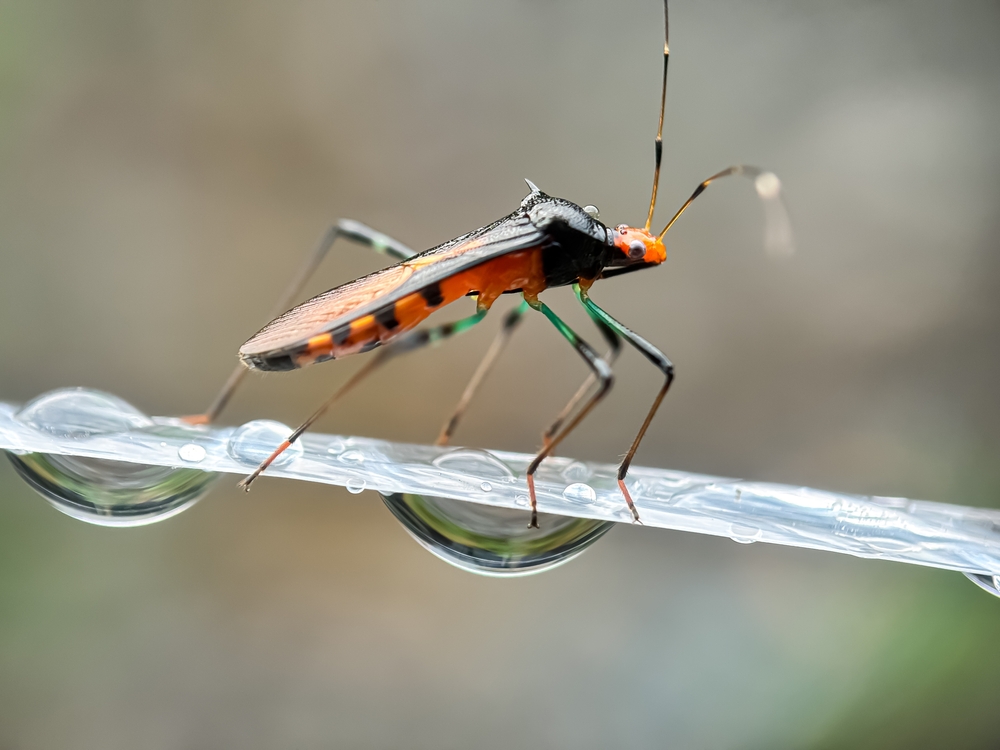
With a name like “assassin bug,” you might expect these insects to be dangerous. And you wouldn’t be wrong. Assassin bugs are known for their stealth and deadly hunting techniques. They use their long proboscis to inject a lethal saliva into their prey, liquefying their insides, which the bug then sucks out. It’s a gruesome method, but it’s incredibly effective.
Assassin bugs are versatile hunters and will go after a variety of prey, from other insects to spiders and even small vertebrates. Their camouflage helps them blend into their surroundings, making it easier to ambush unsuspecting prey. Some species even mimic the appearance of their prey’s food or mates to lure them in. This strategic hunting and adaptability make them successful predators despite their small size. It’s a reminder that in nature, size isn’t everything when it comes to being a top predator.
7. Great Horned Owl
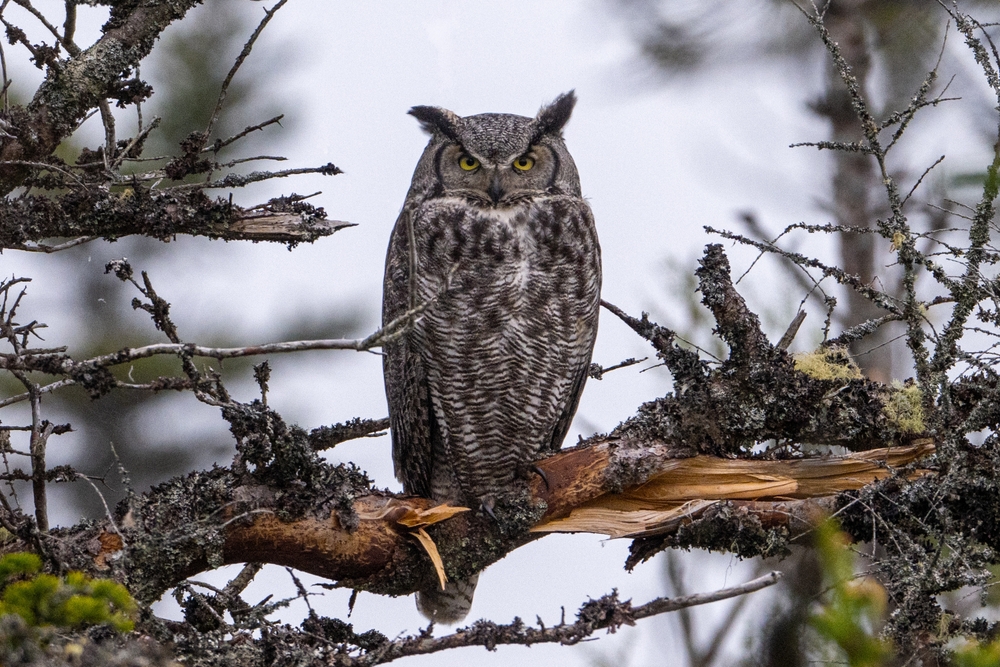
The great horned owl is a powerful and silent predator, often called the “tiger of the sky.” This bird of prey is known for its extraordinary hunting skills and willingness to take on large and challenging prey. With their acute hearing and keen eyesight, great horned owls can spot and capture prey even in complete darkness. According to ornithologist Dr. Scott Weidensaul, these owls are capable of exerting over 500 pounds of pressure per square inch with their talons, making them incredibly lethal hunters. Their ability to fly silently also gives them an edge in stalking their victims.
Owls use a combination of stealth and surprise to capture their prey. They can swoop down silently, thanks to the unique structure of their feathers, which reduces noise. This allows them to catch animals off guard, ensuring a successful hunt. Their diet is diverse, ranging from small mammals to other birds, and even reptiles. This adaptability in diet and hunting technique makes the great horned owl a formidable predator, despite its peaceful appearance.
8. Electric Eel
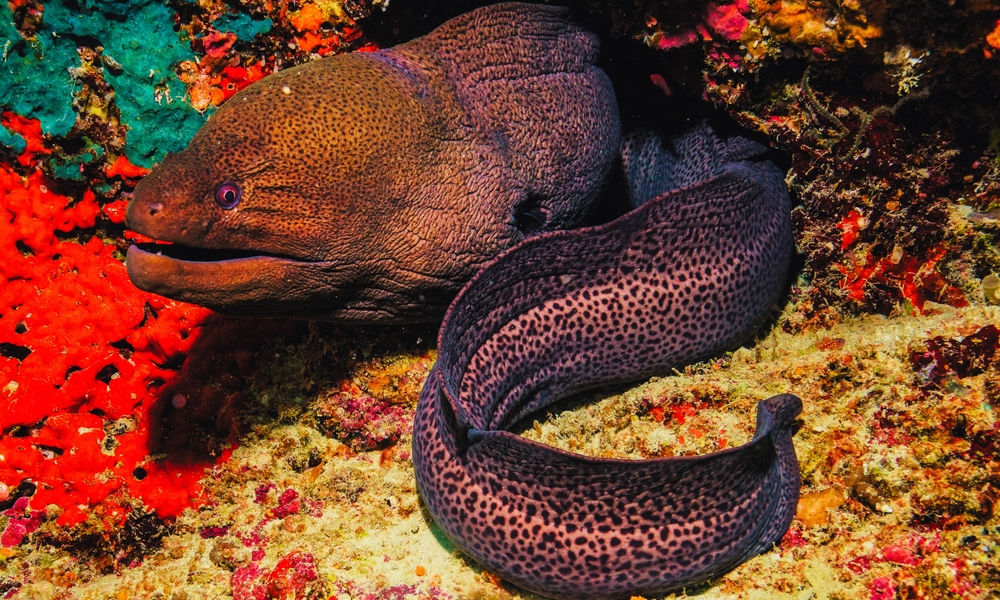
The electric eel is a fascinating and deadly predator lurking in South American waters. Despite its name, it’s not actually an eel but a type of knife fish. What sets it apart is its ability to generate electricity, which it uses both for hunting and self-defense. Electric eels have specialized cells called electrocytes that store and discharge energy, producing shocks of up to 600 volts. This remarkable ability allows them to stun prey, making it easier to capture and consume.
Their hunting strategy is simple but effective: they emit a small electrical pulse to locate their prey in the murky waters. Once they find a target, a stronger shock immobilizes it, allowing the eel to feed without resistance. This unique hunting adaptation gives the electric eel a significant advantage in its environment. While they might not look intimidating at first glance, their electrifying capabilities make them a force to be reckoned with. It’s a reminder of how diverse and surprising nature can be when it comes to predator tactics.
9. Honey Badger
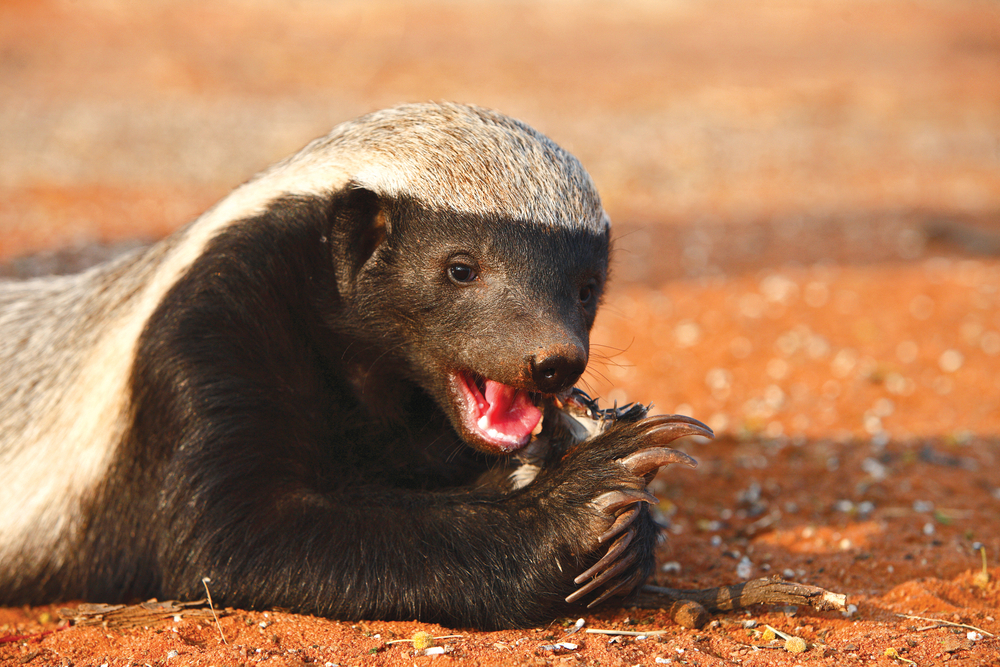
Honey badgers are often described as fearless, and for good reason. These small but fierce predators have earned a reputation for their tenacity and strength. They are known to take on much larger animals, including lions and hyenas, when threatened. Their thick skin and loose body structure make it difficult for predators to get a grip, allowing them to twist and turn to escape attacks. This adaptability and resilience are key to their survival in the wild.
But it’s not just their defensive abilities that make honey badgers formidable; they’re also effective hunters. They have strong claws and powerful jaws that can crush through bone and shell. Honey badgers are opportunistic feeders, known to eat anything from insects and small mammals to venomous snakes. Their ability to take on a wide range of prey and their fearlessness in the face of danger make them one of the most ruthless predators in the animal kingdom. It’s a testament to how determination and adaptability can make even the smallest creatures mighty.
10. Orca
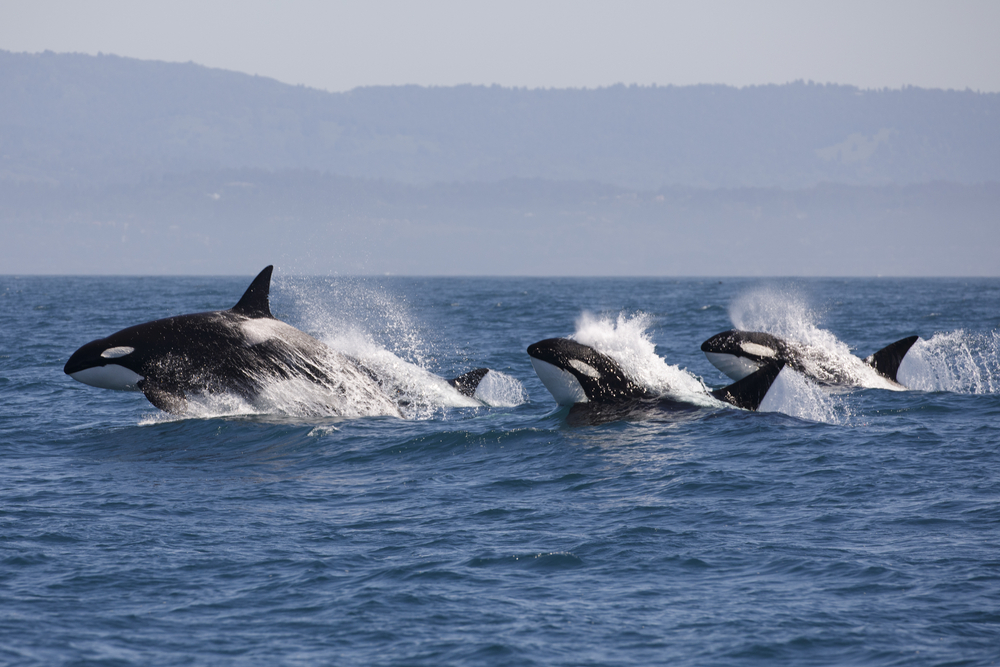
Orcas, or killer whales, are at the top of the marine food chain, known for their intelligence and cooperative hunting techniques. These apex predators can take down prey much larger than themselves, including sharks and even whales. Orcas live in complex social groups called pods and use sophisticated communication to coordinate their attacks. They employ a range of tactics, from beaching themselves to catch seals to creating waves to knock prey off ice floes. This level of strategic planning is rare in the animal kingdom and highlights their exceptional predatory skills.
Their diet varies widely depending on their location and pod culture. Some orcas specialize in hunting fish, while others go after marine mammals. This adaptability ensures their survival across different environments. Orcas also have no natural predators, cementing their status as formidable hunters. So while they may be known as “killer whales,” it’s their intelligence and cooperation that truly set them apart as apex predators.
11. Domestic Dog

While you may know dogs as man’s best friend, many breeds possess strong predatory instincts inherited from their wild ancestors. Certain breeds, like terriers and hounds, are particularly known for their hunting drives. These dogs were bred to chase and catch prey, and they still retain much of that instinct today. Even your lovable Labrador might get a glint in their eye at the sight of a squirrel. This instinct can lead to both amusing and occasionally challenging situations for dog owners.
The hunting behaviors in dogs are often channeled into play, with games of fetch or tug-of-war simulating the chase and capture of prey. However, in some environments, these instincts can become problematic, especially if a dog catches the scent of a smaller animal or livestock. Training and understanding your dog’s breed-specific traits can help manage these inclinations. While they may not be as fierce as their wolf ancestors, dogs still carry the legacy of skilled predators. It’s a reminder of the deep-rooted instincts that exist beneath their friendly exteriors.
12. Tasmanian Devil
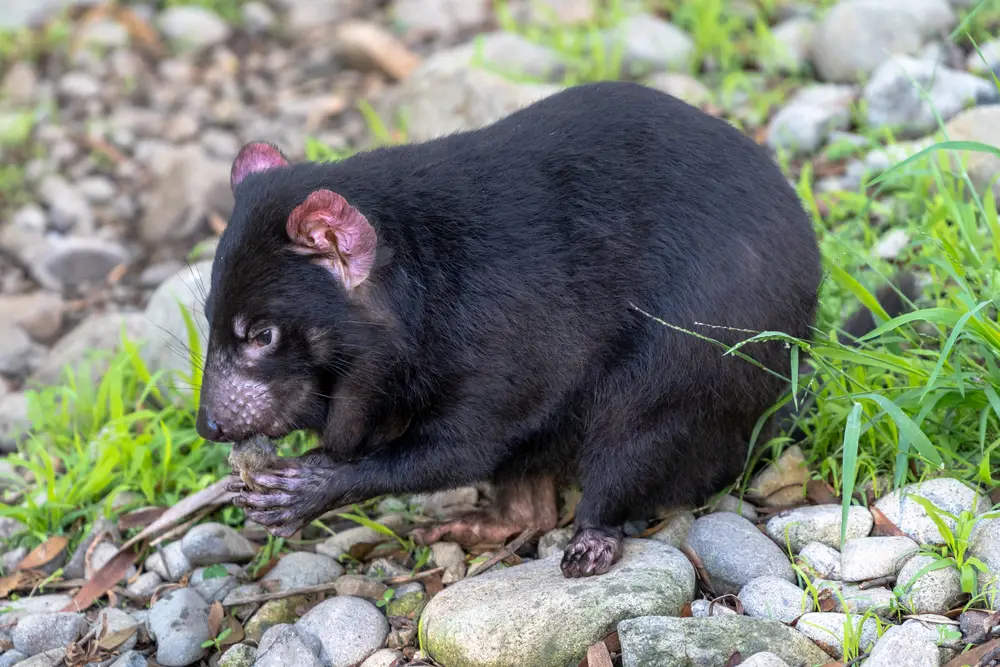
Tasmanian devils may have a cartoonish reputation, but in reality, they are fierce and efficient predators. These marsupials are scavengers and hunters, using their keen sense of smell to locate food over long distances. With powerful jaws and teeth, they can consume an entire carcass, bones and all. This ability to eat everything ensures they make the most of every meal, an important trait for survival in the wild. Their nocturnal habits further enhance their hunting success, reducing competition from other predators.
Their reputation for aggression comes from the loud screeches and growls they use to communicate and ward off others. Tasmanian devils are solitary animals, and their encounters with each other can be fierce, especially when competing for food. This fierceness extends to their hunting techniques, as they don’t shy away from taking on larger prey. While they might not be as large or imposing as other predators, their tenacity and adaptability make them highly successful hunters. It’s a reminder that in the animal kingdom, survival often comes down to attitude as much as ability.
13. Polar Bear

Polar bears are the largest land carnivores, and their prowess as predators is unmatched in the Arctic. They primarily hunt seals, waiting patiently by breathing holes in the ice to catch them. This patience and strategic planning are key to their hunting success. Polar bears have an acute sense of smell, allowing them to detect seals nearly a mile away and beneath several feet of compacted snow. This keen olfactory ability gives them a crucial advantage in the harsh Arctic environment.
Despite their massive size, polar bears are incredibly agile swimmers, capable of covering long distances in search of food. Their swimming prowess allows them to surprise seals in the water, adding another dimension to their hunting skills. The melting Arctic ice presents a growing challenge for these magnificent predators, as they’re forced to travel further to find food. This adaptability is crucial for their survival, highlighting their role as apex predators in their ecosystem. While they appear majestic and serene, polar bears are relentless hunters shaped by one of the planet’s most demanding environments.
14. Dragonfly

A dragonfly’s delicate wings and vibrant colors might make them seem like a benign part of the ecosystem, but it’s actually a skilled aerial predator. With extraordinary flying abilities, dragonflies can hover, pivot in mid-air, and fly backward, making them highly effective hunters. They primarily prey on other flying insects, capturing them with speed and precision. Dragonflies use their large, multifaceted eyes to detect movement, allowing them to track and intercept prey with remarkable accuracy. Their method of hunting is both swift and efficient, ensuring they rarely miss their target.
Dragonflies have been around for millions of years, with fossil records showing ancestors much larger than today’s species. Their evolutionary success is largely due to their advanced hunting techniques and adaptability. As larvae, they are also formidable hunters, using a sudden extension of their jaws to snatch prey underwater. This dual life stage as both aquatic and aerial predators makes them versatile and effective hunters throughout their lifecycle. So, while they might be beautiful to watch, dragonflies are also among the insect world’s most lethal predators.
